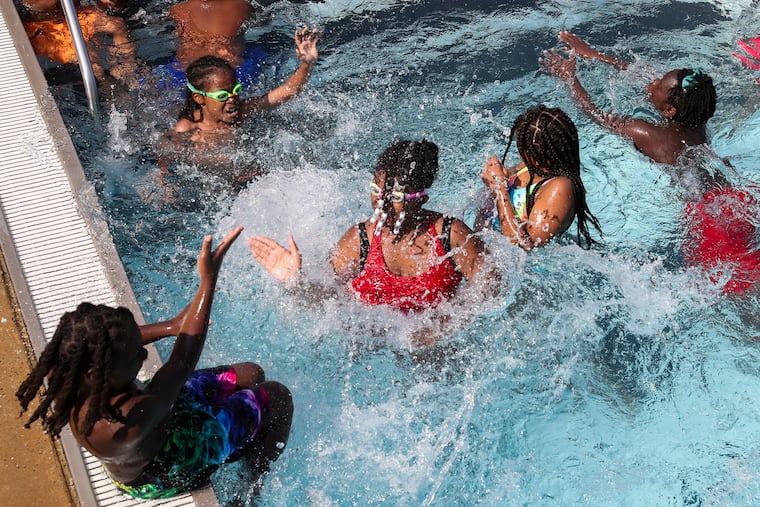6 things you (probably) didn’t know about Philadelphia’s public pools
Takeaways from our latest More Perfect Union report.

It’s been heat-wave-hot out there this summer, which means Philadelphians have found themselves searching for the nearest pool.
We recently delved into the complicated history of these essential public spaces, which have been racially contested since the very beginning. Philadelphia invented the city pool as we know it, but it also segregated its pools and left them to deteriorate when they were finally integrated. The consequences of this history continue to be deadly: In swimming pools nationwide, Black children drown at rates almost 8 times higher than their white peers.
With just a few weeks left of the 2022 chlorine season, here are six key takeaways from our reporting.
The first city pool
Philadelphia built the first outdoor city pool in 1884. The city helped to advance a radical vision that others soon adopted: To build good citizens, invest in public space. The early pools were imperfect public squares, initially unsegregated by race.
A dunking, then a race riot
After the Great Migration, the demographics of Philadelphia and its pools changed dramatically. In Brewerytown, the Athletic Recreation Center pool became particularly prized turf as racial tension simmered. In 1941, three white boys dunked a Black boy under the water while he was swimming at the pool. The incident incited a “full-sized race riot” that shook the neighborhood for days.
Budget cuts and closures come after desegregation
In the wake of desegregation efforts at public pools across the city, private swim clubs cropped up “like weeds’' in the 1960s, according to The Inquirer. Backyard pools took off, too. As white people fled for the suburbs and their own pools, Philadelphia left its public pools to deteriorate. Administration after administration cut the Parks and Rec budget; the pools were always on the verge of being shuttered because of financial crises and too-long-delayed maintenance.
20 closed pools
This year, 20 of the city’s 70 outdoor pools won’t open at all because of repairs and staff shortages. Opening 50 pools required a “massive, massive” effort, according to Parks and Rec, which runs the majority of city pools. Amidst a national lifeguard shortage, Parks and Rec raised the starting pay for lifeguards and visited more than 100 schools — and they’re already recruiting for next year.
Locked gates and lost lives
Residents and public officials connect shuttered pools to the city’s gun crisis, an epidemic that tends to spike along with the temperature. The blocks surrounding the Athletic Recreation Center today are more vulnerable to heat than other parts of the city; temperatures there soar higher than the city average. District Attorney Larry Krasner recently said extending pool hours would be a way of “saving lives.”
Reviving Philly’s pool legacy
Parks and Rec Commissioner Kathryn Ott Lovell often says that Philadelphia has the most public pools per capita of any city in the country, which is not accurate.
But it’s true that Philadelphia once was the pool capital of the nation, and helped to define one of the most beloved institutions of American summer.